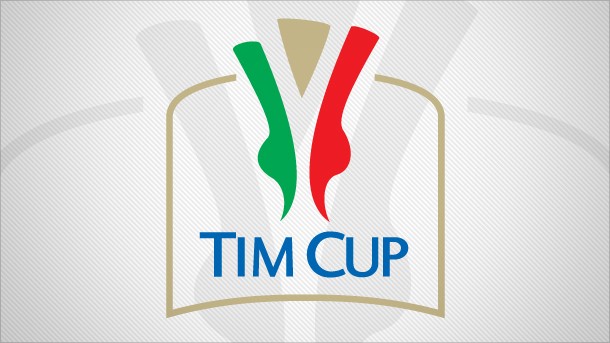
At times, cup competitions can feel like a breath of fresh air. Away from league formats that are dominated by the same heavy hitters year on year, cups offer the potential for less illustrious clubs to have their say. The big boys still most often walk away with the silverware when all is said and done, but there’s an intangible type of magic in cup formats that league competition just can’t provide in many ways.
Look no further than some of the massive upsets in the FA Cup down the years. Wrexham’s famous 2-1 win over Arsenal in 1992 immediately springs to mind. Also in the stream of conscience are Shrewsbury’s shock victory over Everton in 2003 and Wimbledon’s shock defeat of league champions Liverpool in the 1988 final. For a more contemporary example, take note of relegated Wigan’s dispatching of Manchester City to claim the crown in 2013. One year on, the then-Championship side went on to knock the Citizens out in the quarter-finals, earning a semi-final berth alongside Sheffield United.
In last season’s Copa del Rey, Segunda outfit Racing Santander made their way to the quarter-finals amid financial turmoil at the club. Real Zaragoza fought their way to the same stage the year before as they went on to finish last place in La Liga. Cup competitions are where David meets Goliath, and unlike in top divisions, the latter is at great risk of tumbling to the ground.
But in Italy, such isn’t necessarily so. The Coppa Italia continues to show a shockingly low level of parity – and it’s affecting both the reputation and allure of the tournament.
This past week, the fourth round of the Coppa Italia was contested by 16 sides. Ten of the participants hailed from Serie A, with the remaining six representing Serie B. After the fixtures were played out, eight of the top flight clubs booked a place in the round of 16. Every side from the second tier was eliminated to fade into obscurity, two Serie A sides also crashing out at the hands of their fellow first division competitors. The way the fourth round played out clearly doesn’t quite make for gripping reading.
Most bothersome is that all eight of the clubs that played at home advanced. This would be well and good, except for the fact that the Coppa Italia’s seeding format calls for the stronger side to be awarded home field advantage. Only one of the Serie B contestants, Modena, were even able to get on the scoresheet. The others were each brushed aside by their Serie A dominators by a combined score of 11-0. Needless to say, there wasn’t much drama to behold.
This phenomenon points to a broken system. Each year, the top eight from the previous Serie A season are given a free pass until the round of 16. The bottom twelve enter the fray in the third round. All of Serie B steps into the frame in the second round, while select Lega Pro and Serie D sides start their journey in the first round. Outside of special cases in which matches must be moved, the prevailing rule is that the higher-seeded team always plays at home. Of the 62 matches played so far in the current edition of the Coppa Italia, only 11 times has the away side won and thus advanced to the next round.
The road to the final stages has thus been laid bare for the less distinguished. In the 2013-14 Coppa Italia campaign, Udinese, Fiorentina, Roma and Napoli contested the semi-finals. The previous time around, Juventus, Lazio, Roma and Inter had the honour of forming the final four. The system favours the overlords and makes for a tournament that frankly lacks appeal, save the back end in which many of the same big boys slug it out for the crown.
In this sense, the Coppa Italia isn’t necessarily a curious case. It’s shortcomings are clear. The typically paltry attendance for matches until the two-legged semi-finals get under way are a red flag. The Coppa Italia isn’t drawing people in, because the plot seems to repeat itself with each passing years. Changes are needed – changes that will benefit Italian football as a whole.
Random selections for the right to play at home would be a start. The advantage of plugging away against a backdrop of home support would help less fancied clubs make deeper runs, also giving them the potential to draw better attendances with bigger sides coming to town. More interesting headlines would make for less general apathy regarding the competition, raising its profile and possibly its monetary earnings potential as well.
Alas, the main impediment to change is the administrator of the Coppa Italia itself – the Lega Serie A organises the Coppa Italia. It’s no secret that keeping the current format is in the best interest of Italy’s top flight, as it ensures that the preeminent clubs in Serie A maintain a greater chance of bringing home silverware. There’s no catalyst for reform given this truth, even as it is painfully obvious that the Coppa Italia needs a makeover to reflect the type of drama seen in the FA Cup.
There are plenty of broken aspects of Italian football, and the Coppa Italia serves as a microcosm of the situation the peninsula finds itself in at the moment. The tournament has enormous potential, but is stunted by a system that is defined by favouritism and in turn lags behind its counterparts elsewhere in Europe. With such a rich footballing past, Italy deserves better – after all, the underpinning of sport is an environment that fosters earnest competition and in turn inspires engrossing storylines. The Coppa Italia is shorn of magic in its current form, and for the greater good of the Italian game should be turned on its head to get up to standard.
Add Sportslens to your Google News Feed!






